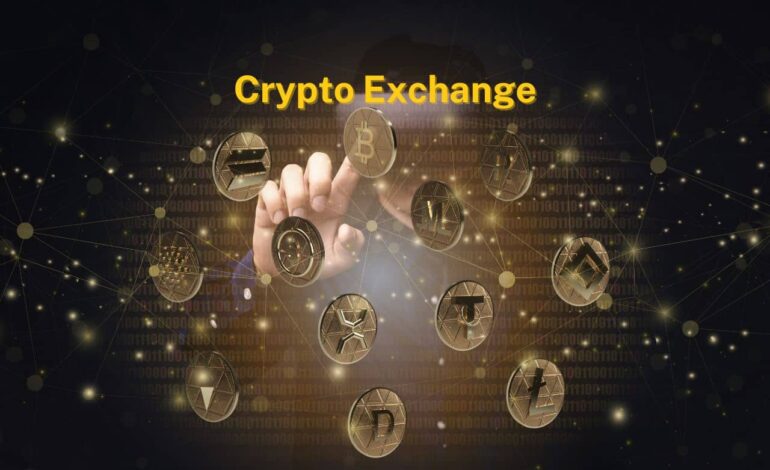What is DePIN? Understanding Decentralized Physical Infrastructure Networks
DePIN, short for Decentralized Physical Infrastructure Networks, represents a paradigm shift in how we envision and construct essential infrastructure. This groundbreaking field marries the power of blockchain technology with real-world physical assets, creating decentralized, efficient, and community-owned networks. Instead of relying on large corporations, imagine a world where vital services like wireless internet, renewable energy, or even healthcare data are managed by a distributed network of individuals. That’s the transformative potential of DePIN.
DePINs, as described by Messari, can be divided into two main categories based on the type of hardware, resources, goods, or services provided.
- Physical Resource Networks (PRNs): PRNs involve decentralized, location-dependent hardware resources that provide real-world services. These resources, such as connectivity, mobility, and energy, are essential for delivering localized, non-fungible goods and services. For instance, when ordering a taxi, you expect transportation between two specific points; with energy services, you require power available in your immediate area. Similarly, localized weather data needs to reflect conditions specific to your location. In PRNs, the physical placement of the resource matters significantly, as these services are inherently tied to specific locations.
- Digital Resource Networks (DRNs): In contrast, DRNs consist of networks that provide fungible, digital resources, such as storage, computing power, or bandwidth, without a need for physical proximity. Here, users don’t require specific knowledge of where a resource is located; they only need access to its functionality. For example, whether your vacation photos are stored in a data center across town or across the globe doesn’t matter—as long as the storage is accessible. Similarly, the physical location of computing resources for machine learning applications is generally irrelevant, as these services are designed to function independently of location.
With this understanding of PRNs and DRNs, we can explore how DePIN has the potential to transform industries and change the world.

The Concept and History of DePIN: From Idea to Reality
The Idea Behind DePIN
The concept of DePIN (Decentralized Physical Infrastructure Networks) was born from the belief among Web3 developers that people worldwide could collectively build a decentralized, transparent, and more efficient infrastructure network than traditional models. They envisioned a system where ownership belongs to everyone, free from control by any single organization or individual.
The History of DePIN
While the term “DePIN” has gained popularity only recently, its foundational principles have been in development since 2011, under various names such as Margin F, Proof of Physical Work, and ED5. By the end of 2022, the community officially adopted “DePIN” as the standard term.
Below are some key milestones in DePIN’s development:
- November 2021: IoTeX introduced the concept of MachineFi, where resources from smart devices are monetized via blockchain.
- April 2022: The Proof of Physical Work (PoPW) consensus mechanism was created to encourage participants to build hardware networks.
- July 2022: TIPIN (Token Incentivized Physical Infrastructure Networks) was introduced, using tokens to motivate users to contribute to infrastructure deployment.
- September 2022: EdgeFi was launched, focusing on deploying hardware resources closer to end users.
- November 2022: “DePIN” was selected as the official term through a Twitter poll organized by Messari.
How Does DePIN Work? Unpacking the DePIN Flywheel for Crypto Investors
DePIN Mechanics: A Deep Dive into the Technology
DePINs operate on a unique model involving three main components:
- Physical Infrastructure: This refers to the tangible assets underpinning the network, such as sensors, routers, vehicles, renewable energy sources, or even unused storage space on individual computers.
- Middleware: This layer acts as a bridge between the physical infrastructure and the blockchain. It facilitates communication, data exchange, and ensures that the physical assets can seamlessly interact with the blockchain network.
- Blockchain System: This forms the backbone of the DePIN, functioning as the administrative and transactional layer. It manages user and provider accounts, tracks resource usage, distributes rewards, and ensures the security and transparency of the network.
How a DePIN Works?
- Providers connect their physical assets (e.g., solar panels, unused storage) to the DePIN network through the middleware layer.
- Users access and utilize the services offered by the network (e.g., data storage, computing power, renewable energy).
- The blockchain diligently tracks resource usage and automatically rewards providers with tokens based on their contributions.
- Users pay for services using tokens or other cryptocurrencies, creating a circular economy within the DePIN ecosystem.
The DePIN Flywheel: Understanding the Engine of Growth and Profit Potential
One of the most compelling aspects of DePIN is the concept of the “DePIN Flywheel,” a self-reinforcing cycle that drives growth and adoption:
- Token Incentives: DePINs offer attractive token rewards to incentivize providers to contribute their resources to the network. These tokens hold real-world value and can appreciate as the network grows.
- Network Growth: As more providers join the network, attracted by the token incentives, the availability, affordability, and quality of services improve. This, in turn, attracts more users seeking a better alternative to traditional systems.
- Token Appreciation: Increased user demand drives up the value of the DePIN’s native token, further incentivizing providers to join or contribute more and attracting investors looking for the next big opportunity.
- Further Network Growth: This cycle continues, creating a self-reinforcing loop of growth and expansion that benefits both users and providers within the DePIN ecosystem.

What Are the Benefits of DePIN? Exploring the Advantages for Users and Investors
DePIN Advantages: Unlocking Value and Efficiency in Infrastructure
DePINs offer a compelling alternative to traditional infrastructure models, presenting numerous advantages for both users and investors:
- Horizontal Scalability: Unlike traditional infrastructure, DePINs easily scale horizontally by adding more providers, adapting seamlessly to fluctuations in demand.
- Community Control – Decentralization: DePINs are owned and governed by their communities, giving individuals a greater say in how the infrastructure is run.
- Fair Pricing: DePINs typically operate with transparent pricing models that directly reflect the actual costs of providing services.
- Cost-efficient Operation: By crowdsourcing resources and eliminating intermediaries, DePINs operate more efficiently and cost-effectively than traditional providers.
- Permissionless: Anyone can participate in a DePIN without needing permission from a central authority, fostering innovation and inclusivity.
- Incentivization: DePINs provide strong financial incentives for providers to contribute their resources and maintain the network.
What Are the Challenges Facing DePIN? Assessing Risks and Opportunities
While DePIN’s potential is vast, it’s crucial to recognize the challenges this emerging technology faces:
- Adoption Stage and Impact on Revenue: DePIN adoption is in its early stages. Success hinges on attracting a critical mass of providers and users through effective marketing and community building.
- Technological Complications: The technical complexities of DePINs can be a barrier to entry. Simplifying the user experience and providing educational resources will be crucial for broader adoption.
- Cost of Running Private Facilities: The costs of acquiring, operating, and maintaining physical infrastructure can be significant for providers. DePIN projects need to provide clear guidance, support, and potentially financing options.
- Profitability: DePIN projects must ensure that rewards for providers are sufficient to cover costs and provide a reasonable profit margin for long-term sustainability.
DePIN Sectors and Crypto Projects: Finding Your Next Investment Opportunity
Exploring the Booming DePIN Sectors: From Wireless to Healthcare
DePIN projects are emerging across various sectors, each with unique opportunities:
- Wireless: Helium, a decentralized wireless network for IoT devices, exemplifies this sector.
- Geospatial: Hivemapper incentivizes users to contribute to a decentralized map.
- Mobility: DIMO is building a decentralized infrastructure for managing vehicle data and services.
- Health: Healthblocks rewards users for sharing health data and participating in fitness challenges.
- Energy: Arkreen is building a decentralized marketplace for renewable energy.
- Storage Networks: Filecoin allows users to rent out their unused storage space.
- Compute Networks: Nunet is creating an AI-powered marketplace for computing resources.
- Bandwidth Networks: Theta Network aims to decentralize video streaming and content delivery.
Top DePIN Crypto Projects: A Curated List for Savvy Investors
Here are some notable DePIN crypto projects worth exploring:
- Helium (HNT): Decentralized wireless network for IoT devices
- Hivemapper (HIVE): Decentralized mapping platform
- DIMO (DIMO): Decentralized vehicle data management system
- Healthblocks (HBLS): Decentralized health data platform
- Arkreen (ARK): Decentralized renewable energy marketplace
- Filecoin (FIL): Decentralized storage network
- Nunet (NTX): AI-powered marketplace for computing resources
- Theta Network (THETA): Decentralized video streaming network

Summary
DePIN represents a paradigm shift in how we think about and build infrastructure. By leveraging blockchain technology and tokenized incentives, DePINs have the potential to create a more decentralized, efficient, and equitable future for all. While challenges remain, the rapid pace of innovation and growing interest in DePIN suggest that this technology is poised to disrupt traditional industries and empower communities around the world.
Disclaimer: This article is for informational purposes only and should not be considered financial advice. Investing in cryptocurrencies carries risk, and it’s essential to conduct thorough research and seek advice from a qualified financial advisor before making any investment decisions.
See more: Crypto Market Trends 2025
Join our community: Telegram izyCrypto



